Some Belated... But Technically Significant Observations about:
WHY Do High Mileage GM 4.2L Engines ...Consume SO Much Motor Oil:
(1) Excessive Carbon Deposits in the Combustion Chambers along with Gas-Gum literally allows for the
*Gluing* of the Two Upper
*Low Tension Compression Rings*, tightly sticking them (
VERY firmly) inside of the Six Piston's Land and Grooves. THIS creates the freedom for an EXCESSIVE amount of Combustion Gases to
BLOW-BY the Rings and Pressurize the Lower Engine Block above the Fluid Level of the Motor Oil.
(2) This Excess Blow-By creates enough
Positive Pressure with the motion of each Stroke of the Pistons to act like an Air Pump that forces this Combustion By-Product Laden Gaseous Matter upwards and into the areas just above the Rotating Valve Train, right under the Sealed Valve Cover.
(3) The Presence of a PCV "Spigot" located at the very Front pf the Upper Valve Cover encourages the Pressurized Blow-By Exhaust in there to concentrate the *Spinning Cast-Off" droplets of oil directly onto the under side of the Valve Cover Chamber.
(4) Directly above all of this... is an Intake Vacuum that starts from the Air Filter Box moving through the Air Resonator and then into the Open Throttle Body. This activity forms a sufficient amount of
SUCTION inside of the Small Rubber PCV Elbow Hose located in between the Upper Valve Cover and the Lower Front PCV Port in the Body of The Resonator.
(5) This SUCTION serves to
DRAW OUT the Collecting Motor Oil, allowing it to get pulled out along with all of those Excessive, Pressurized Engine Blow-By Combustion Gas Fumes underneath there that will eventually allow the Heavier Old Motor Oil to Pool down inside of the bottom of the Resonator.
(6) Under Idle Conditions
(a Period of STRONGEST Intake Vacuum) and later under
Heavy Acceleration, enough of a Vacuum Force develops sufficient to Pull the Old Motor Oil Up and Into the Throttle Body and finally... it moves by Gravity and Vacuum downwards though each of the Intake Manifold Runners where it gets ingested along with the Air Stream and along with the Atomized Gasoline coming from the EFIs located just inside of each Intake Port Cylinder Opening. And
FINALLY, that Old Motor Oil and Blow-By Gas gets
incompletely burned along with that ingested Air and Sprayed-In Fuel.
(7) The over-burden of whatever does
NOT get burned inside of each Cylinder eventually is pushed out during the Exhaust Strokes and will be broken down inside of the Catalytic Converter. This Extra Work involved is called
"Poisoning The CAT" and
THIS is a Major Cause of Ruining the CAT Performance, since heavy Hydro-Carbons have to be "Cracked" apart and broken down by the Very High Temperatures being created by ALL of this EXTRA *Stuff*.
(8) The Best Treatment for this particular problem is to perform a "Carbon Busting" Clean-Out of the Upper Combustion Chamber around the Valve Seats, the Piston Tops and the Two Top *Low Tension* Trapped Compression Rings using the ACDelco "Top Engine Cleaner" Treatment as the Method of Choice.
(9) The additional application of a "'Through-The-Gas-Tank" Treatment like Chevron Techron will help to augment the ACDelco TEC Treatment, but
BOTH will be necessary for an effective effort at performance improvement in Compression, Power, Reduction in the Loss of Motor Oil and even...
a bit of Improved Gas Mileage.
DuckDuckGo. Privacy, Simplified.

duckduckgo.com
(10) The Real Proof that this is what is occurring in your Motor can be seen below... and if you likewise
Discover any Old Motor Oil leaking out from around the Three Figure "8" Intake Manifold Gaskets that are failing to seal after too many miles of operation without being changed out...
THIS is what is happening inside of the IM Runners as that Old Motor Oil gets Vacuumed down inside of those Runners. The Burned Carbon Gas-Gum Blow By Residues collect in what should otherwise be
SPANKING CLEAN AND CLEAR INTAKE PORTS inside of the Aluminum Engine Head:
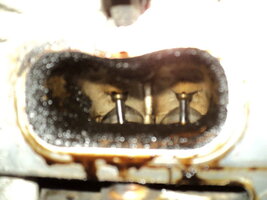
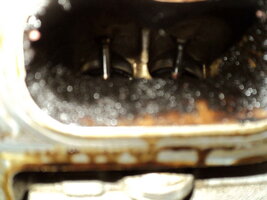
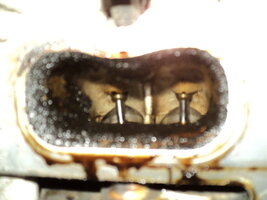
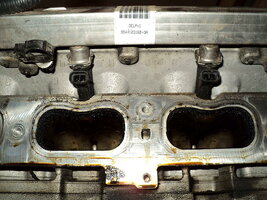
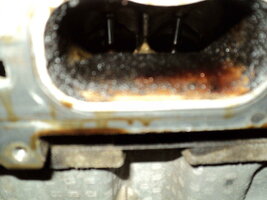
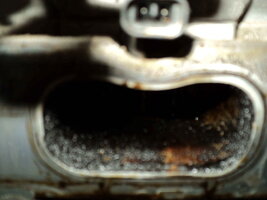
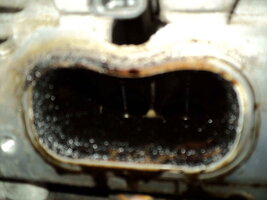
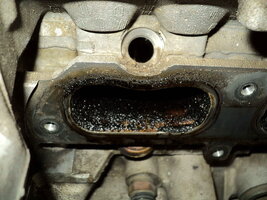
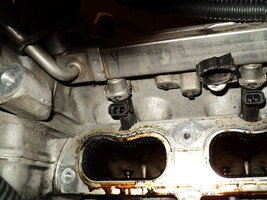

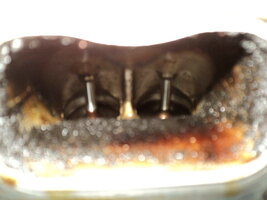
I hope this edifies and explains this Damned Mystery in a way that will make "Mechanical Common Sense" for us all. If it Helps... I've exported this Article into a PDF for inclusion in the FAQ ...with Moderator Approval. -- mrrsm--
A Related "On Topic" Thread:
I was cleaning the throttle body in my '06, and noticed that the inside of the air plenum (directly on top of the engine, just upstream of the throttle body), was sprayed with creamy looking oil. Apparently the short tube which supplies clean air to the top of the engine has instead been...

gmtnation.com

 , but no smoking during any starts like you mention. Oil turning dark has no measure as to its ability to lubricate the engine, but the best way to check the quality of how well the oil is doing is send a sample to Blackstone for oil analysis. (
, but no smoking during any starts like you mention. Oil turning dark has no measure as to its ability to lubricate the engine, but the best way to check the quality of how well the oil is doing is send a sample to Blackstone for oil analysis. (









